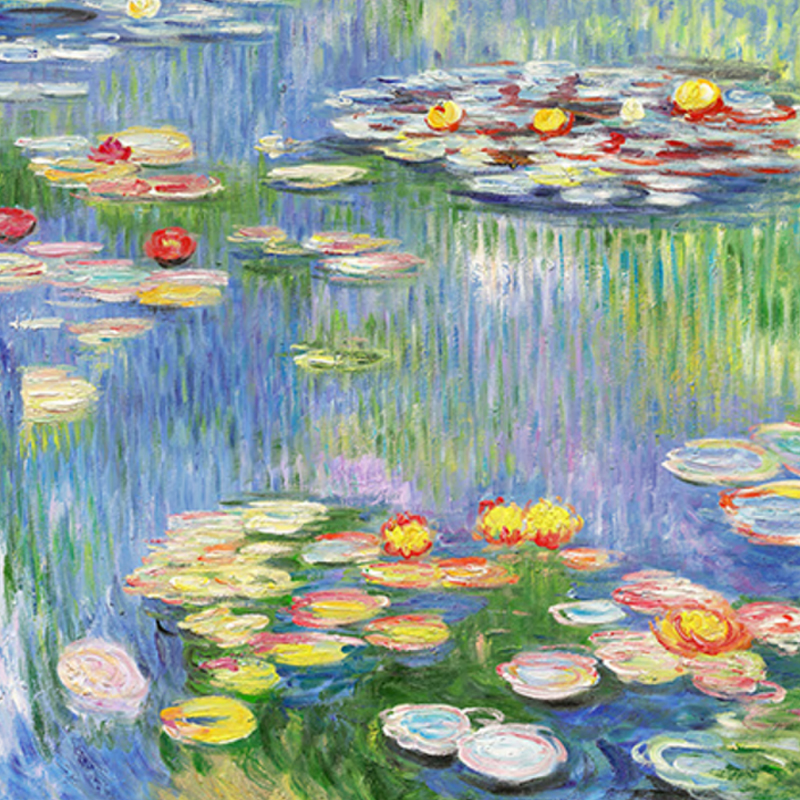The limitations of Oil Painting tools and materials lead to the complexity of Oil Painting techniques. For centuries, artists have created a variety of Oil Painting techniques in practice to make Oil Painting materials fully expressive.

①Transparent color-covering method, that is, multi-level depiction with pigments that are not added with white but are only diluted with coloring oil. The next layer of color must be painted after each layer is completely dry. Since the color of each layer is relatively thin, the color of the lower layer can be faintly revealed, forming a subtle change in tone with the color of the upper layer. For example, if you paint a solid blue on top of a deep red color layer, it will produce a rich effect of purple in the blue, that is, warm in the cold, which is often a tone that cannot be brought out on the palette. This painting method is suitable for expressing the texture and thickness of objects, and it can especially vividly depict the delicate color changes of the skin of the characters, making people feel that the skin is flowing with blood. Its disadvantage is that the color gamut is narrow, the production process is meticulous, and the time to complete the work is long, so it is not easy to express the artist's immediate artistic creation emotion.
② opaque covering color method, also known as multi-level coloring method. When painting, first use a single color to draw the general appearance of the body, and then use multi-layered colors to shape it. The dark parts are often painted thinner, while the middle tones and bright parts are thickly painted, or covered or left, to form a contrast of color blocks. Due to the different thickness, it shows the rich rhyme and texture of the color.
There is no strict difference between transparent and opaque painting methods, and painters often use them comprehensively in one painting. When expressing objects in dark parts or shadows, the transparent color covering method can produce a stable and deep sense of volume and space; the opaque color covering method is easy to shape the shape outside the dark part and increase the color saturation of the picture. Most of the painters before the 19th century used these two painting methods, and the time to make their works was generally longer.
③ Opaque primary coloring method, also known as direct coloring method. That is to say, after drawing the outline of the object image on the canvas, relying on the color feeling of the object or the conception of the color of the picture to lay the color, basically finish the painting at one time, scrape off the incorrect parts with a painting knife, and then continue to color and adjust. In this painting method, the paint dipped in each stroke is relatively thick, the color saturation is high, and the strokes are relatively clear, which is easy to express the vivid feeling when painting. Many painters after the middle of the 19th century used this method more often. In order to achieve the full effect of the color layer after one coloring, we must pay attention to the use of brushstrokes, that is, the coating method. The commonly used coating methods are divided into flat coating, loose coating and thick coating. Flat painting is to use one-way strength and uniform strokes to paint a large area of color, which is suitable for shaping static shapes in a stable and stable composition; loose painting refers to using the brush according to the natural turning trend of the painted shape, and the strokes are relatively Loose and flexible; impasto is the full or partial thick pile of pigments, and some form a color layer or color block up to several millimeters, so that the pigment shows the interest of texture and strengthens the image.
As an artistic language, Oil Painting includes color, light and shade, lines, texture, brushstrokes, texture, light perception, space, composition and many other modeling factors. , The performance of Oil Painting materials fully provides the possibility of using Oil Painting techniques on a two-dimensional plane base. The production process of Oil Painting is the creative process in which artists consciously and skillfully control Oil Painting materials, select and use techniques that can express artistic thoughts and form artistic images. Oil Painting not only express the ideological content endowed by the artist, but also show the unique beauty of Oil Painting language - painting.



